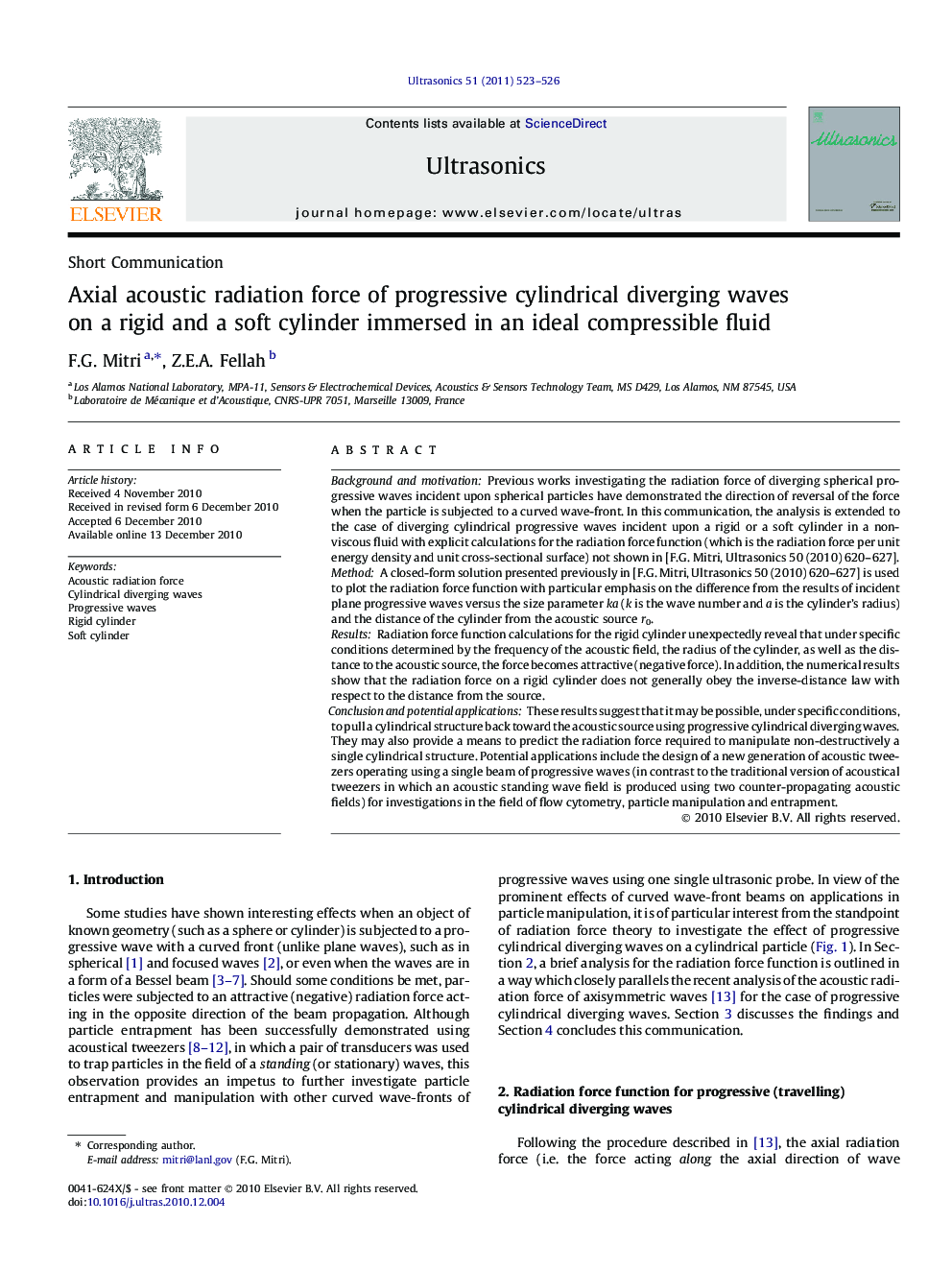| Article ID | Journal | Published Year | Pages | File Type |
|---|---|---|---|---|
| 1759331 | Ultrasonics | 2011 | 4 Pages |
Background and motivationPrevious works investigating the radiation force of diverging spherical progressive waves incident upon spherical particles have demonstrated the direction of reversal of the force when the particle is subjected to a curved wave-front. In this communication, the analysis is extended to the case of diverging cylindrical progressive waves incident upon a rigid or a soft cylinder in a non-viscous fluid with explicit calculations for the radiation force function (which is the radiation force per unit energy density and unit cross-sectional surface) not shown in [F.G. Mitri, Ultrasonics 50 (2010) 620–627].MethodA closed-form solution presented previously in [F.G. Mitri, Ultrasonics 50 (2010) 620–627] is used to plot the radiation force function with particular emphasis on the difference from the results of incident plane progressive waves versus the size parameter ka (k is the wave number and a is the cylinder’s radius) and the distance of the cylinder from the acoustic source r0.ResultsRadiation force function calculations for the rigid cylinder unexpectedly reveal that under specific conditions determined by the frequency of the acoustic field, the radius of the cylinder, as well as the distance to the acoustic source, the force becomes attractive (negative force). In addition, the numerical results show that the radiation force on a rigid cylinder does not generally obey the inverse-distance law with respect to the distance from the source.Conclusion and potential applicationsThese results suggest that it may be possible, under specific conditions, to pull a cylindrical structure back toward the acoustic source using progressive cylindrical diverging waves. They may also provide a means to predict the radiation force required to manipulate non-destructively a single cylindrical structure. Potential applications include the design of a new generation of acoustic tweezers operating using a single beam of progressive waves (in contrast to the traditional version of acoustical tweezers in which an acoustic standing wave field is produced using two counter-propagating acoustic fields) for investigations in the field of flow cytometry, particle manipulation and entrapment.
Research highlights► The axial radiation force of cylindrical diverging waves on a rigid immovable cylinder can be attractive (negative) under specific conditions determined by the frequency of the incident acoustic field, the radius of the cylinder, as well as the distance to the acoustic source. ► The radiation force on a rigid cylinder in a cylindrical diverging acoustic field, does not generally obey the inverse-distance law with respect to the distance from the source. ► There exist, however, values of ka that the inverse-distance law holds over a specific range, and particularly for the case of the soft cylinder. ► Potential applications include the development of a new generation of acoustical tweezers operating with progressive waves.
